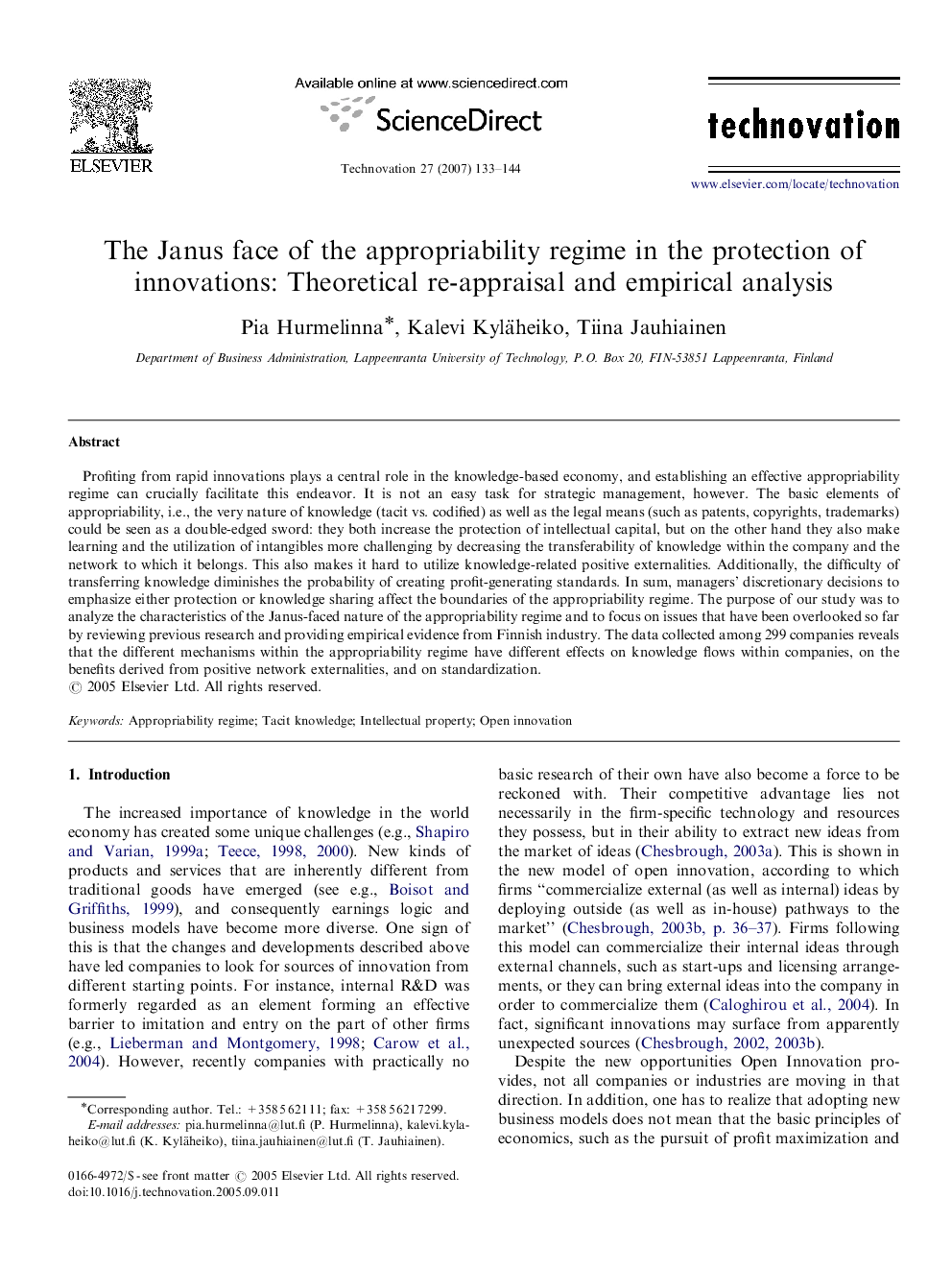| Article ID | Journal | Published Year | Pages | File Type |
|---|---|---|---|---|
| 1022371 | Technovation | 2007 | 12 Pages |
Profiting from rapid innovations plays a central role in the knowledge-based economy, and establishing an effective appropriability regime can crucially facilitate this endeavor. It is not an easy task for strategic management, however. The basic elements of appropriability, i.e., the very nature of knowledge (tacit vs. codified) as well as the legal means (such as patents, copyrights, trademarks) could be seen as a double-edged sword: they both increase the protection of intellectual capital, but on the other hand they also make learning and the utilization of intangibles more challenging by decreasing the transferability of knowledge within the company and the network to which it belongs. This also makes it hard to utilize knowledge-related positive externalities. Additionally, the difficulty of transferring knowledge diminishes the probability of creating profit-generating standards. In sum, managers’ discretionary decisions to emphasize either protection or knowledge sharing affect the boundaries of the appropriability regime. The purpose of our study was to analyze the characteristics of the Janus-faced nature of the appropriability regime and to focus on issues that have been overlooked so far by reviewing previous research and providing empirical evidence from Finnish industry. The data collected among 299 companies reveals that the different mechanisms within the appropriability regime have different effects on knowledge flows within companies, on the benefits derived from positive network externalities, and on standardization.
